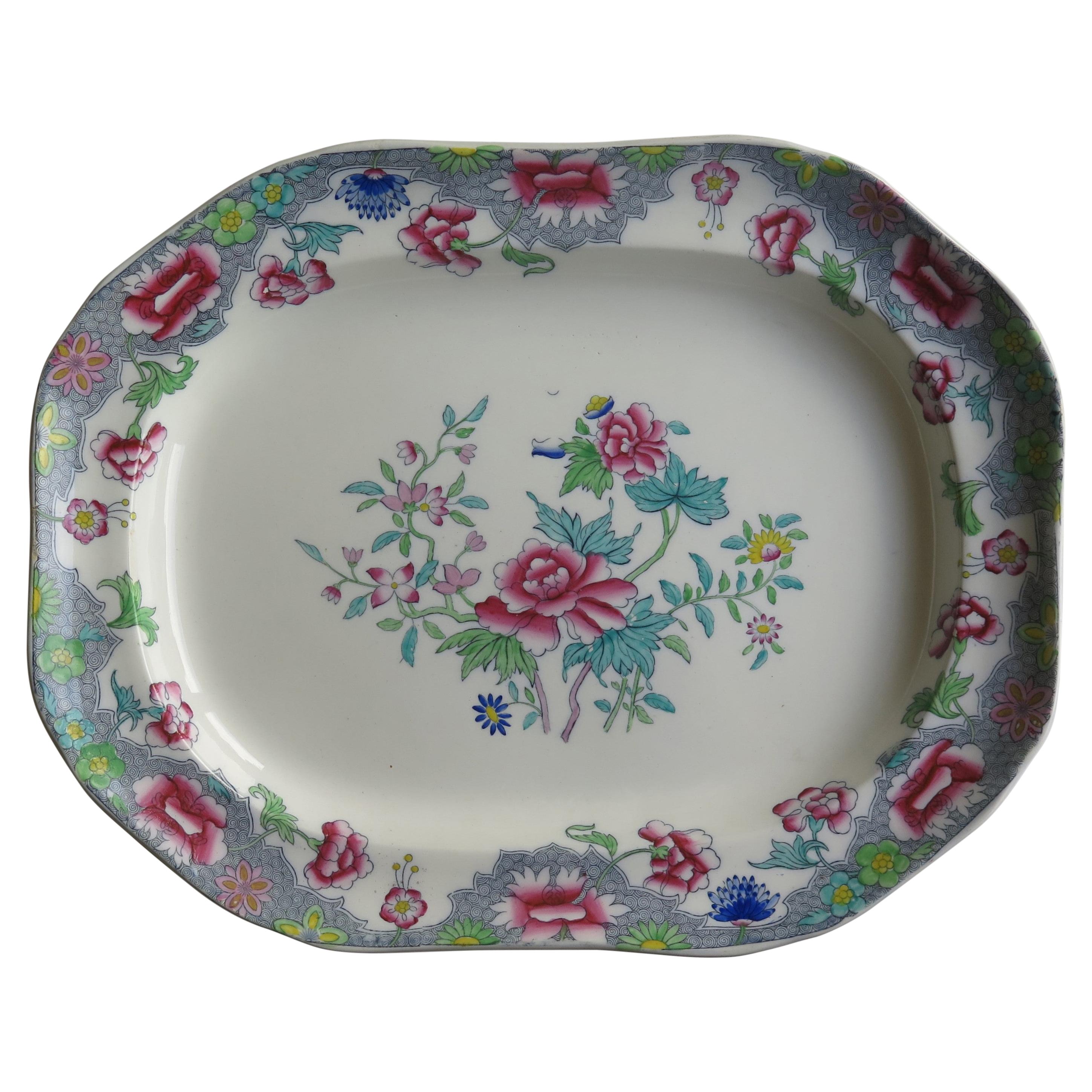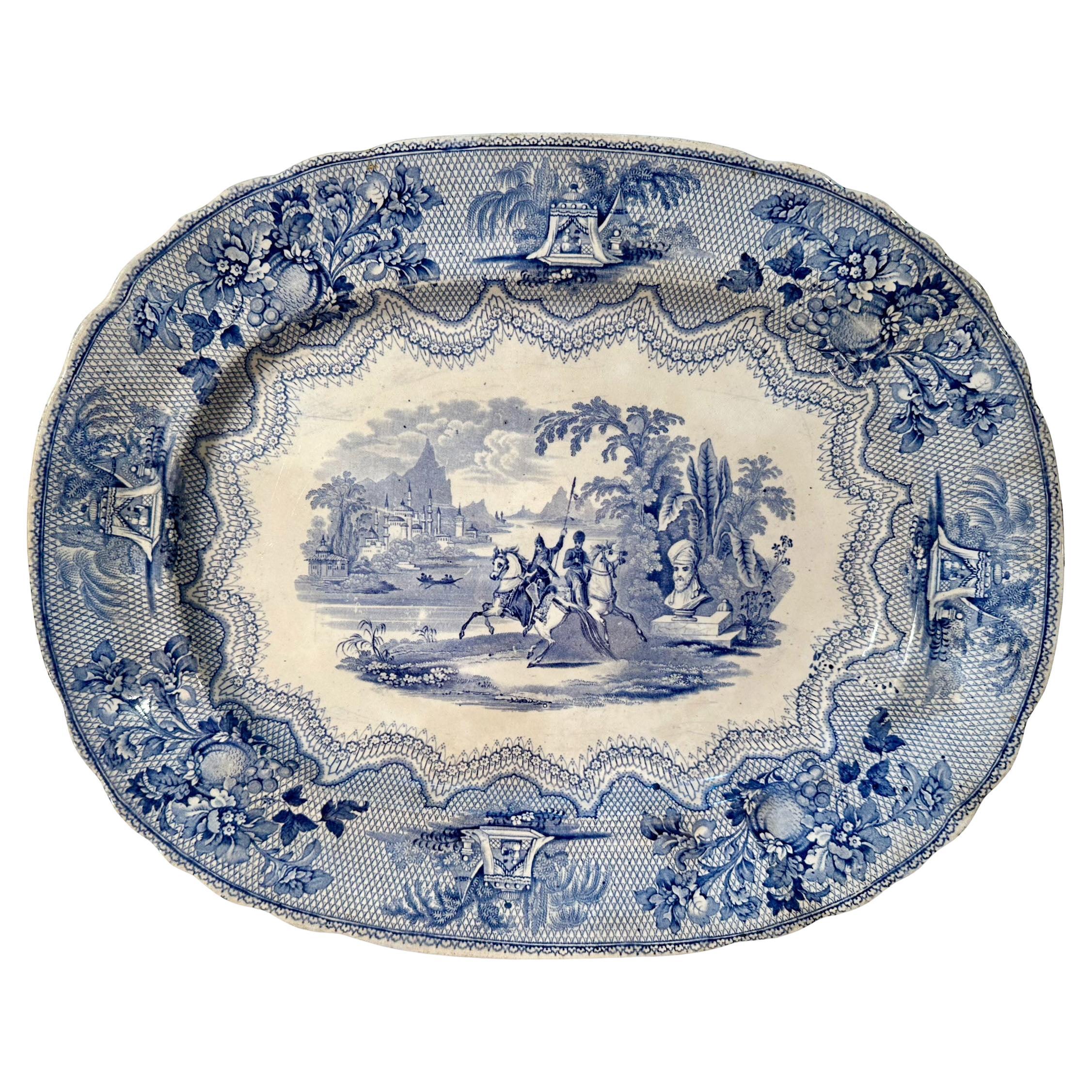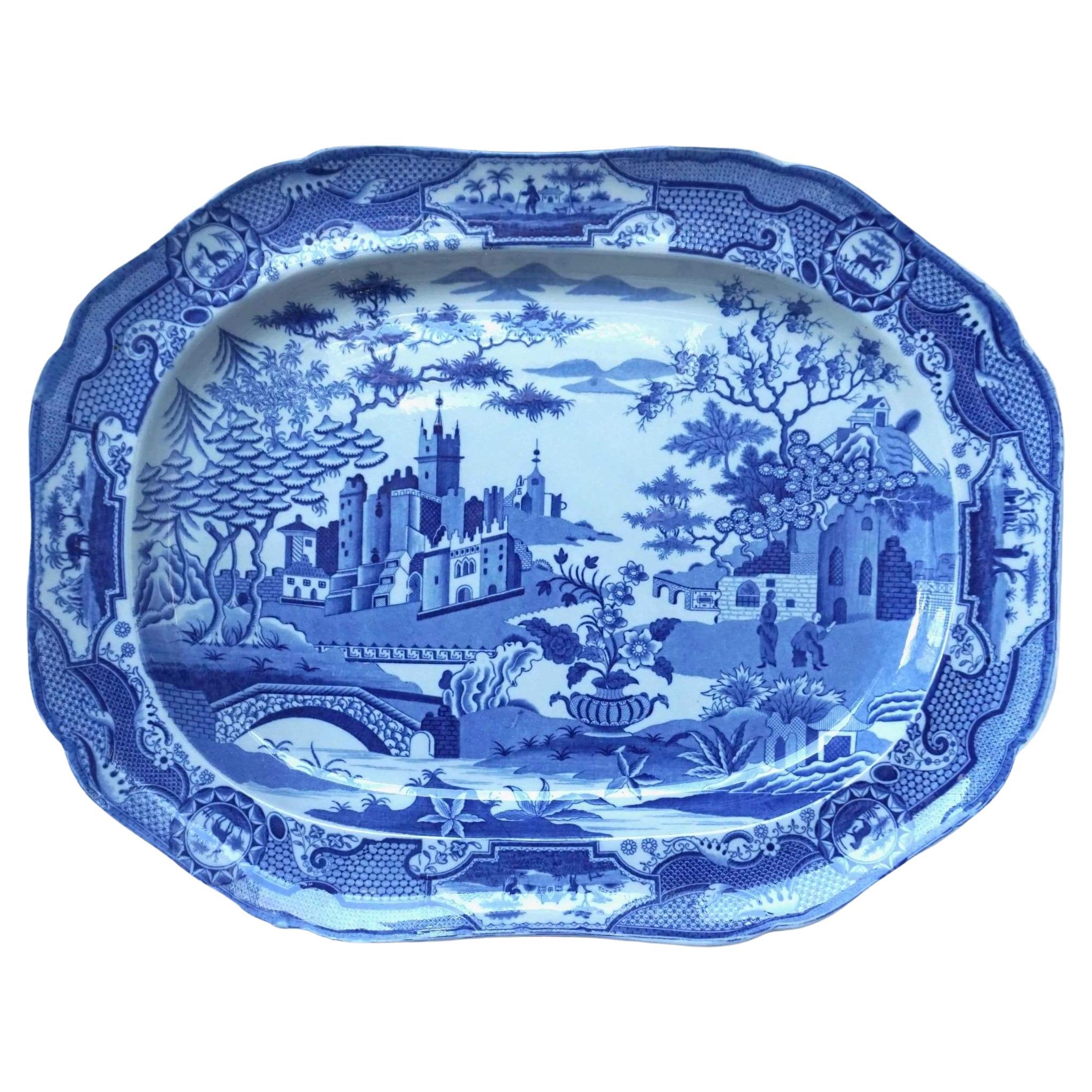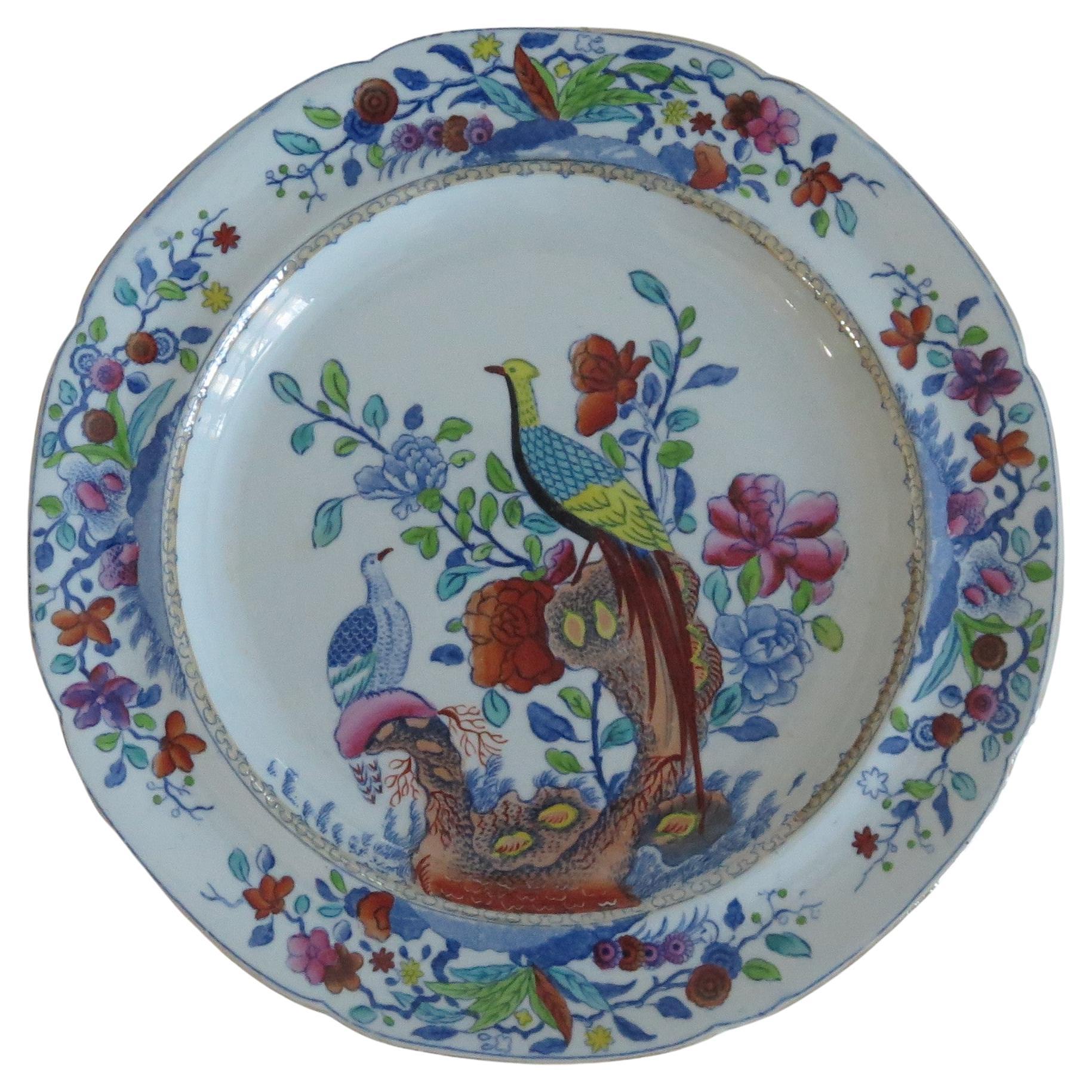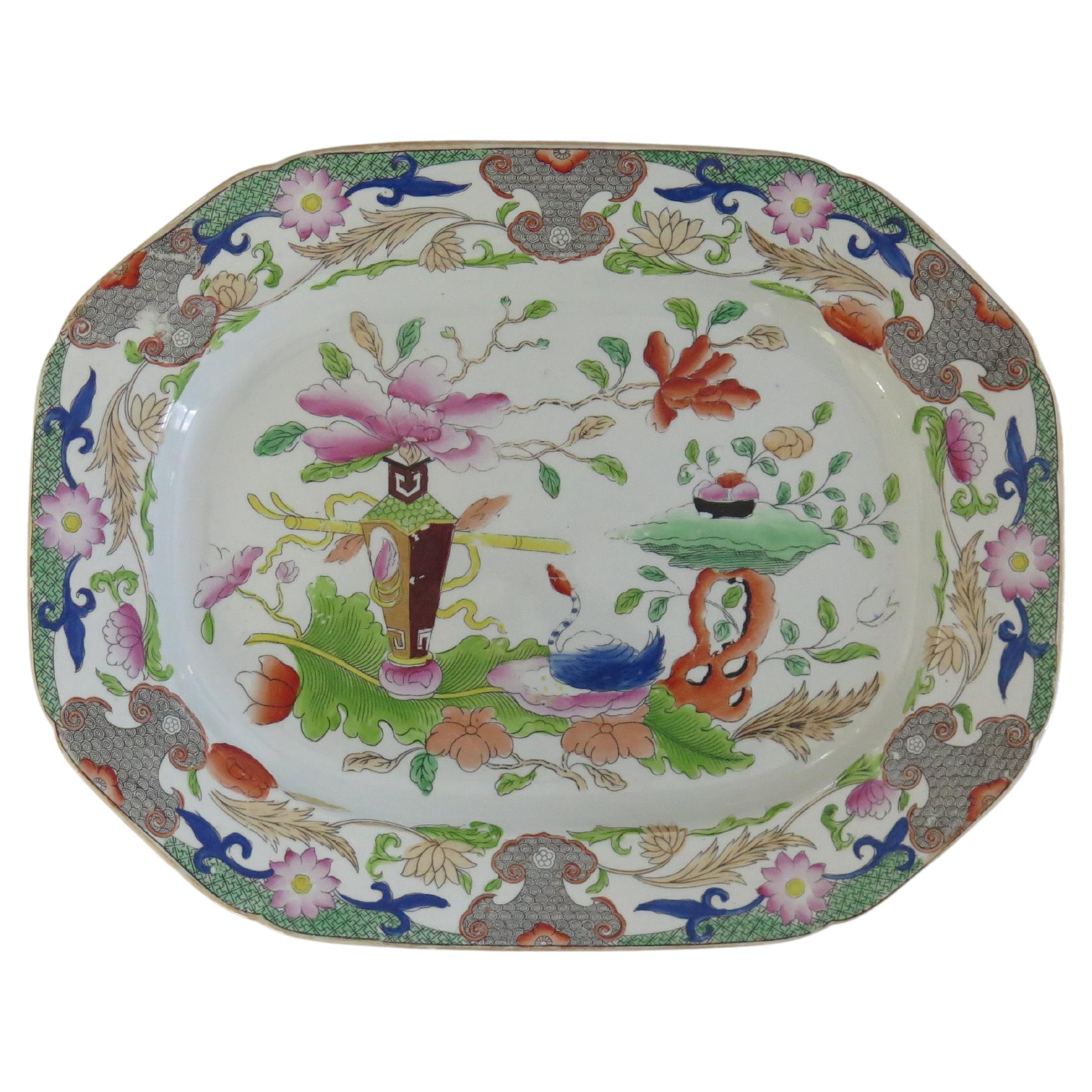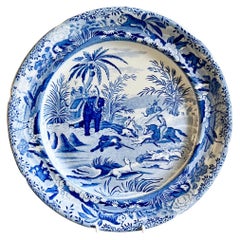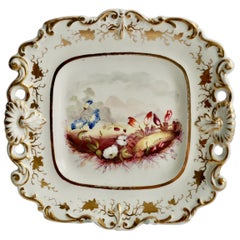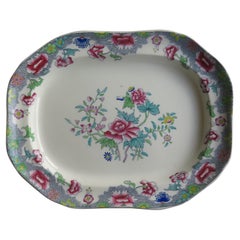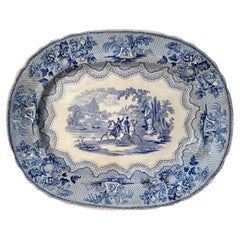
Staffordshire Pearlware Meat Platter, Bear Hunt Pattern Spode Imitation
View Similar Items
Staffordshire Pearlware Meat Platter, Bear Hunt Pattern Spode Imitation
About the Item
- Creator:Staffordshire (Maker)
- Dimensions:Height: 2 in (5.08 cm)Width: 17 in (43.18 cm)Depth: 13 in (33.02 cm)
- Style:Regency (Of the Period)
- Materials and Techniques:
- Place of Origin:
- Period:
- Date of Manufacture:circa 1820
- Condition:Wear consistent with age and use. excellent condition without any damage, some light crazing and a few production marks in the glaze.
- Seller Location:London, GB
- Reference Number:Seller: A-ANO251stDibs: LU4805116292421
Staffordshire
Thanks to its reserves of clay, lead, salt and coal, Staffordshire, England, has been a center for ceramics since the early 17th century. The county was home at one time to hundreds of pottery workshops and as many as 4,000 bottle-shaped kilns that operated year-round. The term “Staffordshire Potteries” refers to the industrial area of Stoke-on-Trent — comprising the towns Burslem, Fenton, Hanley, Longton, Stoke and Tunstall — where most of the production was concentrated.
In 1720, potter John Astbury discovered that he could make what would later be called creamware by adding ground flint powder to the local red clay. Because resources were so plentiful in Staffordshire, local potters could afford to experiment, working to refine their techniques and designs. One such innovator was Thomas Whieldon, an important 18th-century potter known today for his tortoiseshell ware, whose brilliant glazed surface of caramel, yellow and green hues was made with copper and manganese compounds.
Whieldon operated the Fenton Low workshop, making coffee- and teapots, dinner services and even ornamental knife hafts. He was an influential figure: Josiah Spode apprenticed at the workshop prior to opening his company in 1770, and Josiah Wedgwood partnered with Whieldon for five years before establishing his eponymous firm in 1759.
Wedgwood is perhaps the best known of the Staffordshire potters. The firm produced a line of light-colored earthenware for Queen Charlotte, who liked it so much that she granted permission to market it under the moniker Queen’s Ware, which despite the name, was designed for everyday use.
In the same regal vein, in 1773, Wedgwood created the 954-piece Frog service for Catherine the Great, of Russia. The company is also known for its black stoneware, Black Basalt, which imitates the color and shapes of Etruscan vases; Jasperware, with its classical reliefs applied on the unglazed body; and pearlware.
By the end of the 18th century, Staffordshire was the primary producer of ceramics for the American colonies, even creating patriotic wares celebrating independence for this market. The imagery on Staffordshire ceramics became more standardized during the mid-18th century with the advent of transferware, in which a design etched on a copper plate is printed on tissue paper, which is then used to transfer the wet ink onto the ceramic surface. This technique enabled artisans to decorate their wares with complex scenes that wrapped around an object’s surface and make several copies of popular patterns.
The Staffordshire potters also produced decorative figurines, such as this charming pair of cows dating from the 19th century. Particularly popular in Great Britain were pieces with hunting imagery, such as this George IV porcelain stirrup cup in the shape of a fox head wearing a gilt collar inscribed with the word “Tallyho.” Among the many whimsical vessels produced is this mid-19th-century frog mug. The exterior is painted with a charming scene of people picking fruit on one side and ladies on a garden swing on the other side, while inside a molded frog’s head at the bottom of the mug makes a gurgling sound when the beverage has been almost completely consumed.
On 1stDibs, find a range of antique ceramics from the Staffordshire Potteries including decorative objects, tea sets, dinner plates and other items.
- Edward Challinor Pearlware Plate, Blue and White "Death of a Bear", circa 1850By SpodeLocated in London, GBThis is a beautiful dinner plate made in about 1850 by Edward Challinor. The plate is made of pearlware and decorated with a blue and white transfer print that is a close copy of Spode' famous "Indian...Category
Antique 1850s English Regency Porcelain
MaterialsPearlware
$256 Sale Price20% OffFree Shipping - Staffordshire Porcelain Campana Vase, Salmon, Gilt and Flowers, circa 1820By StaffordshireLocated in London, GBOn offer is a very fine small porcelain campana vase made circa year 1820 by an unknown Staffordshire potter. The vase has a beautiful delicate salmon colored ground, rich gilding an...Category
Antique 1820s English Regency Vases
MaterialsPorcelain
- Samuel Alcock Plate, Inverted Shell, Flowers, Provenance G.A.Godden Regency 1822By Samuel Alcock & Co.Located in London, GBThis is a very striking and rare square dessert serving dish made by Samuel Alcock, circa 1822. The dish has a hand painted flower landscape in an unusual style. The dish has provena...Category
Antique 1820s English Regency Platters and Serveware
MaterialsPorcelain
$340 Sale Price20% OffFree Shipping - French Porcelain Serving Dish, Heron and Cockerel La Fontaine, circa 1820Located in London, GBThis is a incredibly charming shell-shaped serving dish made by an unknown maker in France in circa 1820. The dish is modelled in the Sèvres style and decorated with hand painted sce...Category
Antique 1820s French Regency Platters and Serveware
MaterialsPorcelain
- Three Staffordshire Porcelain Spill Vases Floral Cobalt Blue, Regency circa 1820By StaffordshireLocated in London, GBThis is a set of three little spill vases made by an unknown Staffordshire maker in circa 1820, which was the Regency era. Two of the vases are cobalt blue, one is salmon, and all three have beautiful gilding and hand painted flowers. Spill vases were used for match sticks to kindle the fire. Match sticks in 1820 weren't what they are today: they were short hand-cut sticks of wood and came in bundles. Everyone had a "spill vase" on the mantle piece or on a little side table next to the fire, so that the fire could be kindled at any moment. In the early 19th century there were at some point 300 potteries in Staffordshire, and artists would move from pottery to pottery, attracted by competitive wages. Unless items are clearly marked, it is often difficult to identify them and I have not been able to clearly identify these three spill vases as everyone made them. The two cobalt blue vases are clearly from the same maker; the salmon colored one is slightly shorter and different in shape, but basically the same. All have nicely shaped rims and three charming lion's claws as feet. There is beautiful gilding and stunning hand painted flowers in the reserves. Condition report: All vases have some wear; one of the cobalt blue vases had a foot broken and restuck (this is stable and not very visible when in position) and the salmon vase...Category
Antique 1820s English Regency Vases
MaterialsPorcelain
$975 / setFree Shipping - Spode Porcelain Teacup Trio, Red Imari Dollar Pattern, Regency, ca 1810By SpodeLocated in London, GBThis is a beautiful orphaned teacup made by Spode in about 1810. It bears a beautiful Japanese-inspired Imari pattern. Spode was the great pioneer among the Georgian potters in England. Around the year 1800 he perfected the bone china recipe that has been used by British potters ever since, and he was also the leading potter behind the technique of transferware, making it possible for English potters to replace the Chinese export china, which had come to an end around that time, with their own designs. This was fundamental to a thriving industry that would last for about 150 years and provide half the world with their tableware. Spode porcelain is regarded as one of the highest quality porcelains around; for a soft-paste porcelain it is surprisingly hard and fine, and has a wonderful bright white colour. The pattern on this can is called "Dollar" pattern, a very famous pattern that was used by English potters in the 18th and early 19th Century. It is obvious why it is called “dollar” - but its origin is less obvious! It is thought that this pattern was derived from a very old Chinese pattern depicting a tree with elaborate foliage that hides a Chinese character representing longevity or happiness. Traditionally, this went with a an image called “Taotie”, which was used on very ancient bronze vases...Category
Antique Early 1800s English Regency Porcelain
MaterialsPorcelain
$420 Sale Price / set20% OffFree Shipping
- Mid 19th C Copeland / Spode Large Platter or Meat Plate pattern 8036, Ca 1850By Copeland SpodeLocated in Lincoln, LincolnshireThis is a beautiful large Platter or meat plate by Copeland (formerly Spode) in a very decorative floral pattern No. 8036, England, dating to circa 1850. The piece is well potted ...Category
Antique Mid-19th Century English Victorian Ceramics
MaterialsPottery
- Copeland-Spode Large Ironstone Platter in Chinese Figures pattern, Ca 1900By Copeland SpodeLocated in Lincoln, LincolnshireThis is a beautiful very large Platter or Meat Plate by Copeland (formerly Spode) in a very decorative hand painted Chinese figure pattern, dating to the turn of the late 19th Centur...Category
Antique Late 19th Century English Chinoiserie Ceramics
MaterialsPottery
- Staffordshire Blue Transferware Meat PlatterLocated in Tampa, FLA military scene Staffordshire transferware meat platter. Blue and white with marking on back. Circa 1890s, England.Category
Antique 1890s English Platters and Serveware
MaterialsPorcelain
- North Staffordshire Oval Platter Transferware in the Blue Willow PatternBy StaffordshireLocated in Lomita, CAThis blue and white porcelain oval transferware platter is from North Staffordshire in the "Willow" pattern. It is in wonderful condition and measures 1...Category
Mid-20th Century English Chinoiserie Platters and Serveware
MaterialsCeramic
- Large Arabian Pattern Staffordshire PlatterLocated in East Hampton, NYLarge Arabian pattern English Staffordshire platter.Category
Antique 1880s English Platters and Serveware
MaterialsCeramic
- Spode Porcelain Serving Platter or Dish Hand Painted & Gilded Ptn 967 circa 1810By SpodeLocated in Lincoln, LincolnshireThis is a fine example of an English George III period, porcelain serving platter or dish, made by Spode and hand painted in Pattern 967, during the early 19th century, circa 1815. ...Category
Antique Early 19th Century English George III Ceramics
MaterialsPorcelain
